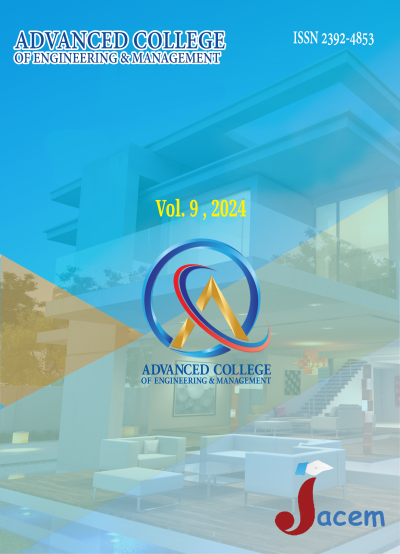The Optimal Placement of a Photovoltaic-integrated Dynamic Voltage Restorer for the Enhancement of Power Quality within the Distribution System: A Case Study of 11Kv Simara Industrial Feeder in Nepal
DOI:
https://doi.org/10.3126/jacem.v9i1.71465Keywords:
Power Quality (PQ), Photovoltaic (PV) system, Space Vector Transformation (SVT), Proportional Resonant (PR) Controller, System Average RMS Variation Frequency Index (SARFI), voltage profile, power loss, optimizationAbstract
Power Quality (PQ) issues like voltage sag, swell, and harmonics in electric power systems, especially those with an unbalanced radial network structure, dynamic compensation mechanisms are essential, particularly for industrial loads susceptible to voltage fluctuations due to faults or overloads. Dynamic Voltage Restorers (DVRs) have been proposed as a viable solution. However, when integrated into a distributed network, it becomes crucial to determine the optimal placement to maximize system performance. This paper focuses on a Photovoltaic (PV) system integrated DVR using Space Vector Transformation (SVT) with a Proportional Resonant (PR) Controller Control strategy. The primary objective is to minimize the System Average RMS Variation Frequency Index (SARFI) within the system of interest by identifying the optimal location of DVR. To assess the effectiveness of the proposed scheme, a functional PV-DVR model was developed using the MATLAB2023a/SIMULINK simulation environment. This model was implemented to dynamically restore node voltages to their pre-fault conditions in response to faults or overloads. The simulation results are presented for both an IEEE 13-node test distribution system and a 50-node typical radial industrial distribution system operating in Nepal. These simulation results serve to demonstrate the effectiveness and practicality of the proposed approach in mitigating power quality issues within electric distribution systems, thereby ensuring uninterrupted operation for critical industrial loads.
Downloads
Downloads
Published
How to Cite
Issue
Section
License
JACEM reserves the copyright for the published papers. Author will have right to use content of the published paper in part or in full for their own work.




